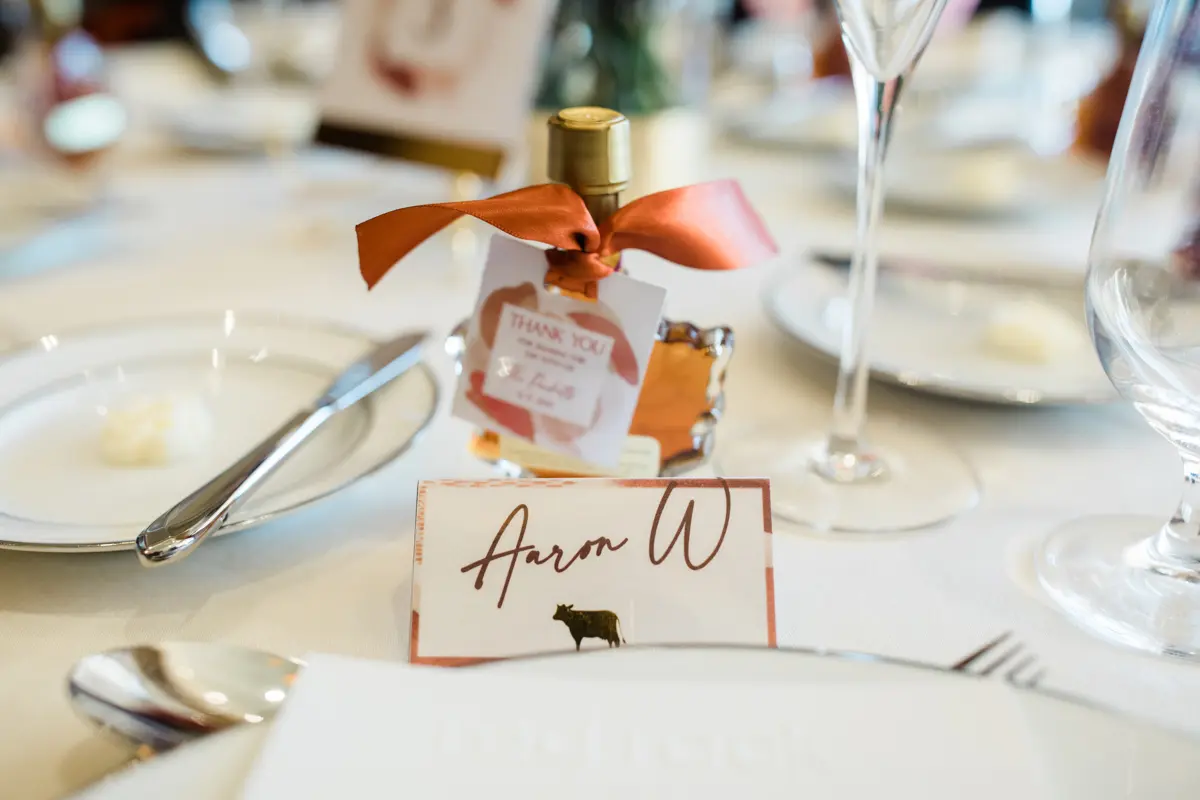Whether you envision a large, traditional ceremony where you exchange vows in front of all your loved ones or a small destination elopement, there are many ways to structure your ceremony.
Your wedding ceremony structure is essentially a schedule of events for your wedding ceremony.
Here is our quick guide on important things you should know about wedding ceremony structure.
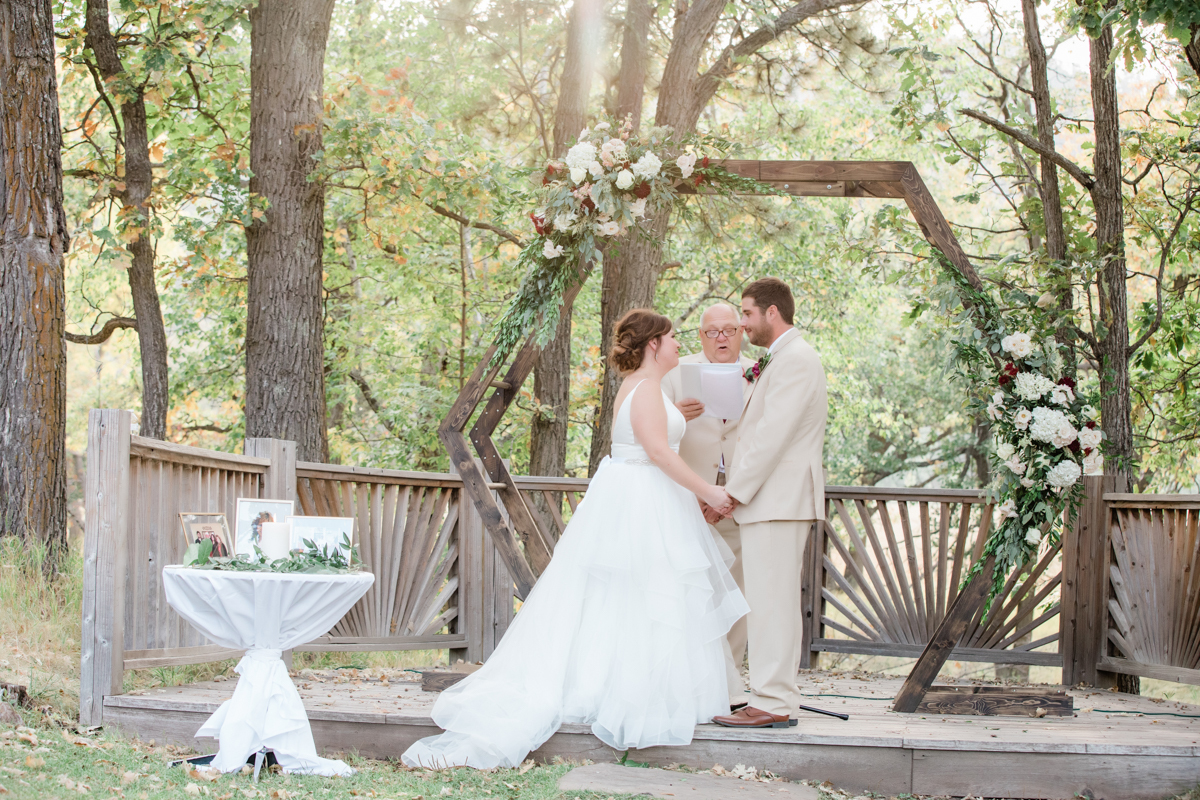
Typical Wedding Ceremony Structure
Wedding ceremonies have a wide range of traditions depending on the culture and time period, but generally, they’re a public ceremony in front of the couple’s community and other celebrants.
A modern wedding ceremony structure typically includes the following:
- Processional, aka the walk down the aisle — The wedding party walks down the aisle in a specific order to mark the beginning of the ceremony.
- Opening remarks from the officiant — The officiant thanks the attendees and may open with a verse, quote, or a religious custom.
- The reading or exchanging of vows — The couple states their lifelong commitment to one another.
- Declaration of intent, aka saying “I do” — This is the final verbal commitment similar to signing an agreement.
- The ring exchange — If the couple plans on wearing rings, they will either take them from the ringbearer to gift or give them to one another.
- The pronouncement of the couple’s marriage — The officiant announces to the wedding the couple is officially married.
- The first kiss as a couple — The couple celebrates and seals the marriage by kissing.
- Recessional — The wedding party walks back down the aisle to mark the end of the ceremony.
This wedding ceremony structure is for the ceremony only.
Many couples have other celebration type events besides the official marriage ceremony.
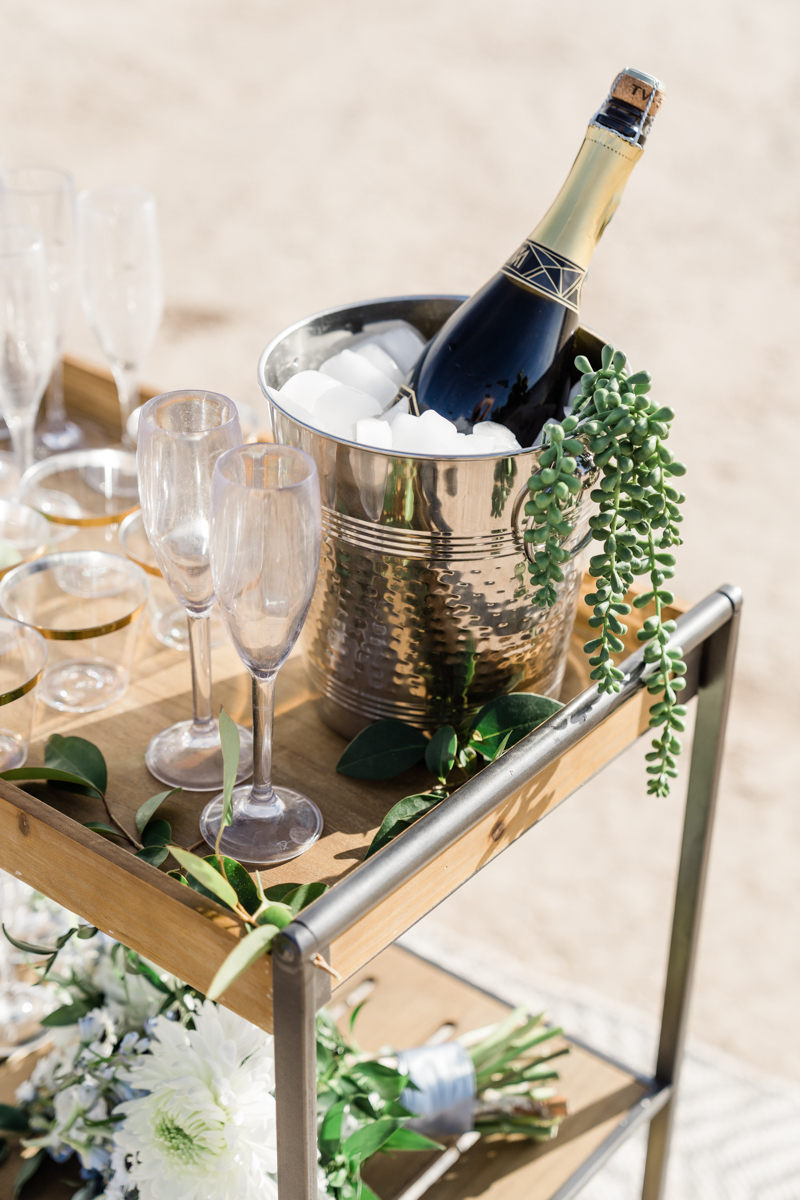
Around the Wedding Ceremony
There are a lot of events that you can include around your wedding ceremony. Here are some options:
1. Engagement Party
The engagement party is typically hosted two to four months before the ceremony by the couple.
They can take place in a formal or informal setting where they will announce their intentions on getting married.
There is usually food and a toast, but some couples add games and dancing.
2. Wedding Shower
Wedding showers are hosted two weeks to two months before the wedding as congratulations to the couple individually.
The couple is “showered” in gifts and congratulations as a way to celebrate their success in love.
The wedding shower is usually hosted by the persons of honor selected by each of the celebrants.
3. Bach Parties
Bach parties are where the engaged couple’s friends take them out individually to celebrate one month before the wedding.
Although some couples have decided to combine their bach parties into one big party.
These are usually a celebration of their last nights of being single and usually involve going out on the town and partying.
Some couples like things more low-key and will have a night in playing board games or sharing stories.
4. Welcome Party
Welcome parties are typically only hosted as wedding ceremony celebrations at destination weddings or when guests have traveled for the wedding.
They happen the day before the wedding and are usually in the form of a cocktail hour where guests are welcomed and the couple expresses their gratitude for coming so far.
5. Rehearsal Dinner
Usually the night before the wedding, the rehearsal dinner is just a way to rehearse the ceremony with the full wedding party.
Couples who are eloping can also host a rehearsal dinner just as a way to celebrate and thank their wedding party for being a part of their special day.
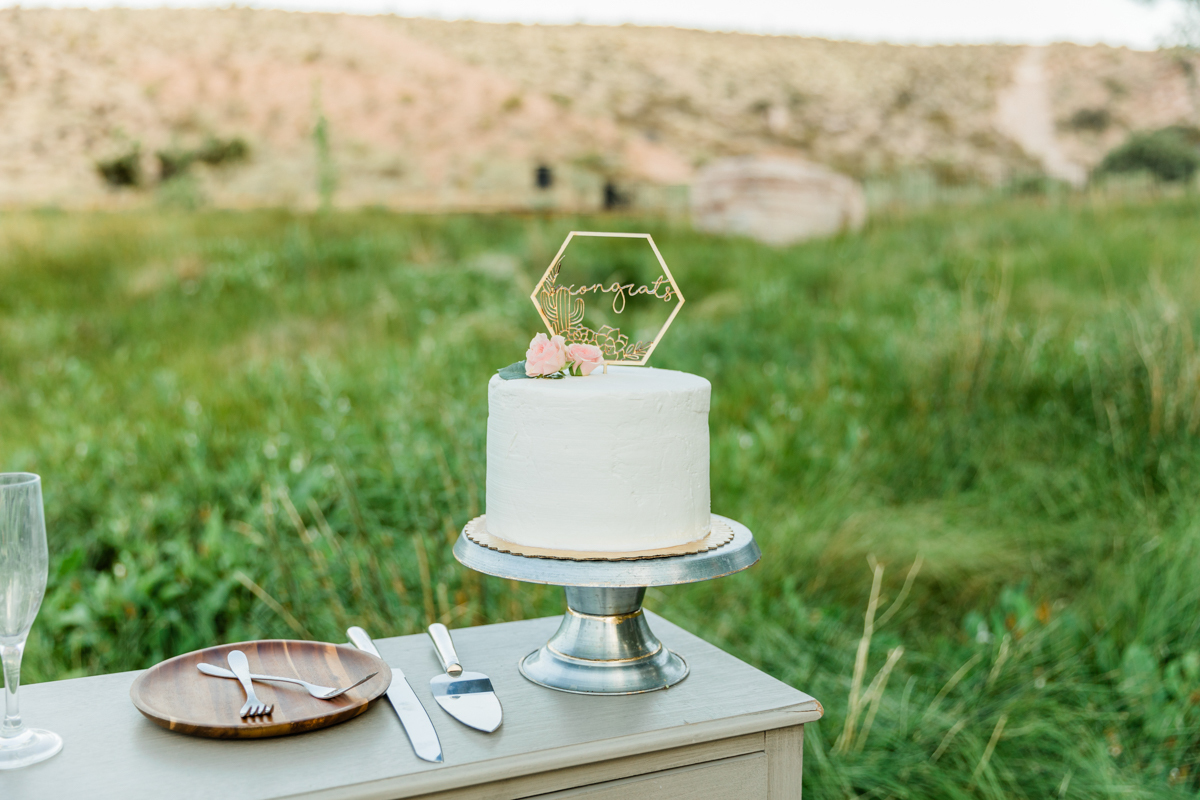
6. Wedding Reception
Wedding receptions often follow the wedding.
However, in cases like destination weddings, micro weddings and elopements, the reception may be on a different day and at a different location.
The reception is a party usually with food and dancing to celebrate the couple’s marriage.
7. After-Party
After-parties are usually right after the wedding or the reception, and they’re not as formal as a reception.
They can be as simple as going to a restaurant or a bar together or can be a whole plan of activities.
They’re ideal for couples who have eloped and can feature some of the same ceremony celebration options as a reception.
8. Farewell Brunch
The farewell brunch is the last event of a wedding ceremony celebration.
They’re perfect for both destination weddings and weddings where friends and family have traveled to attend.
They’re typically the mid-morning after the wedding night and are a touching way to share one last meal before saying goodbye.
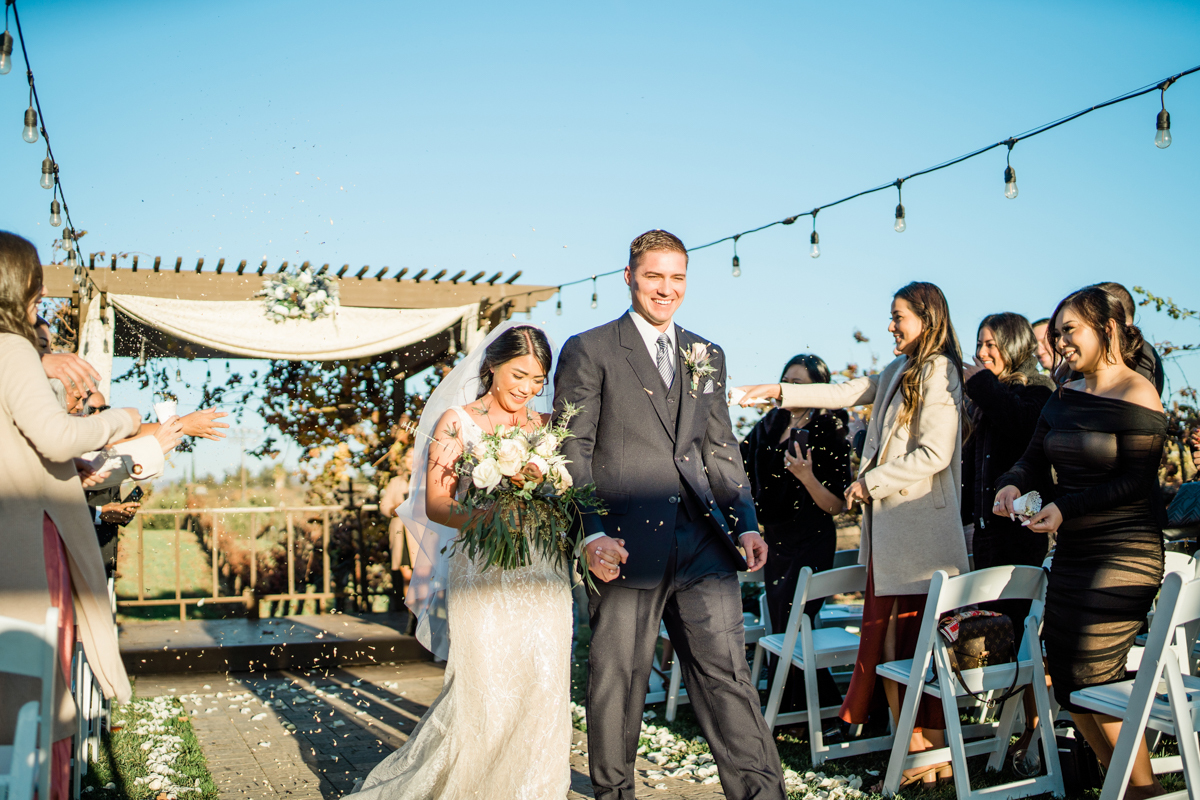
Just getting started with your wedding planning? Check out our guide, In What Order Should I Hire My Destination Wedding Vendors?

